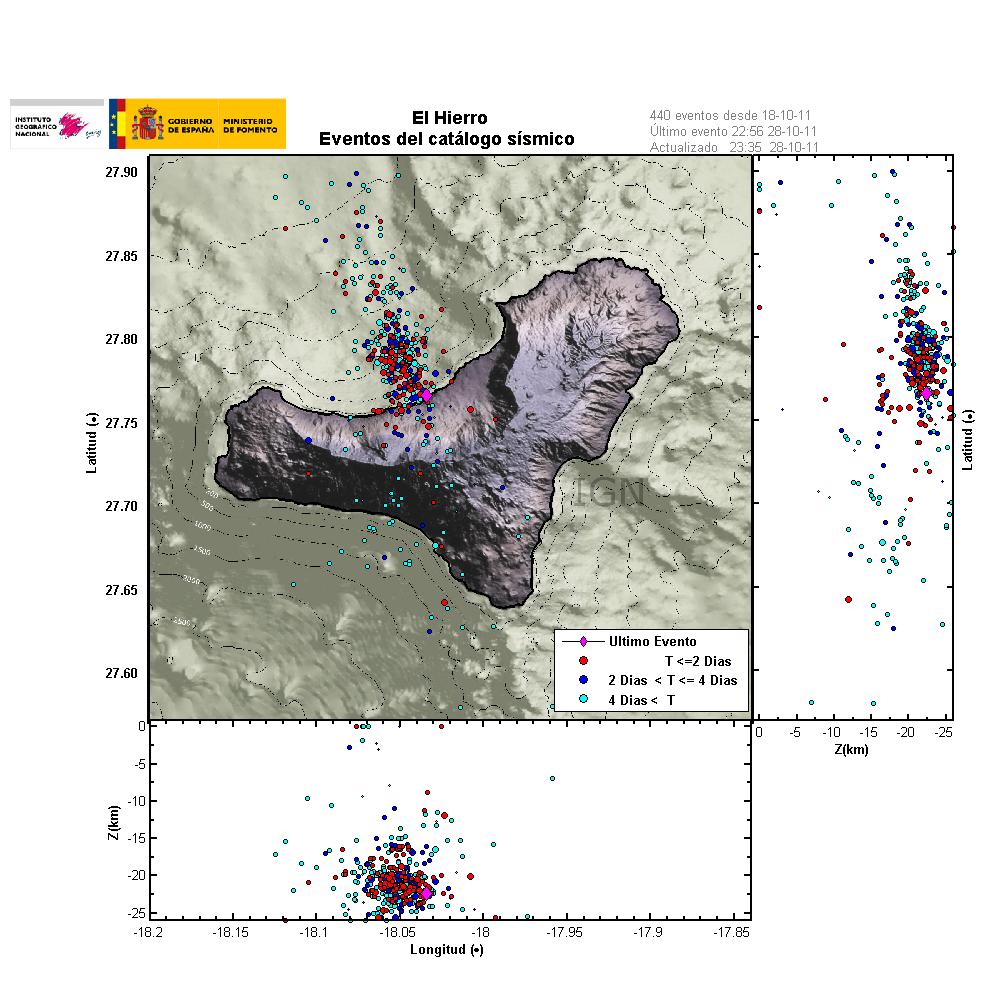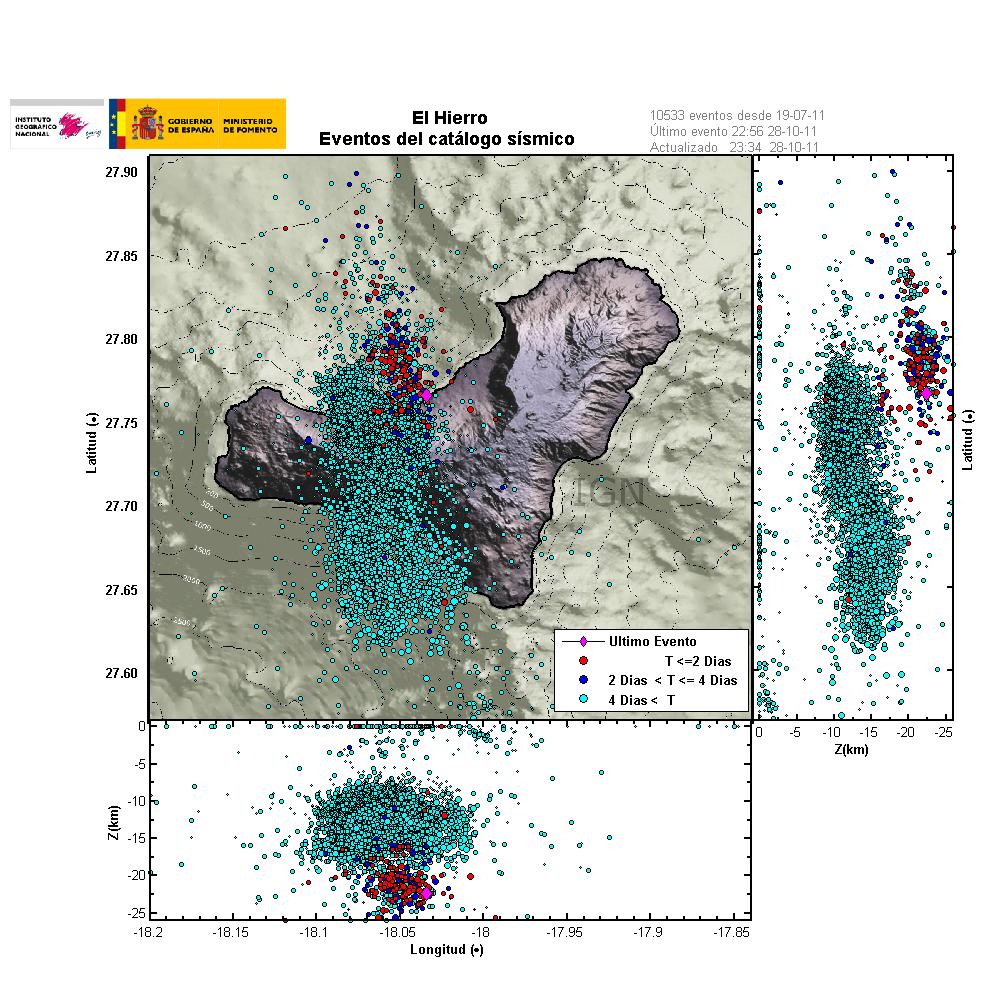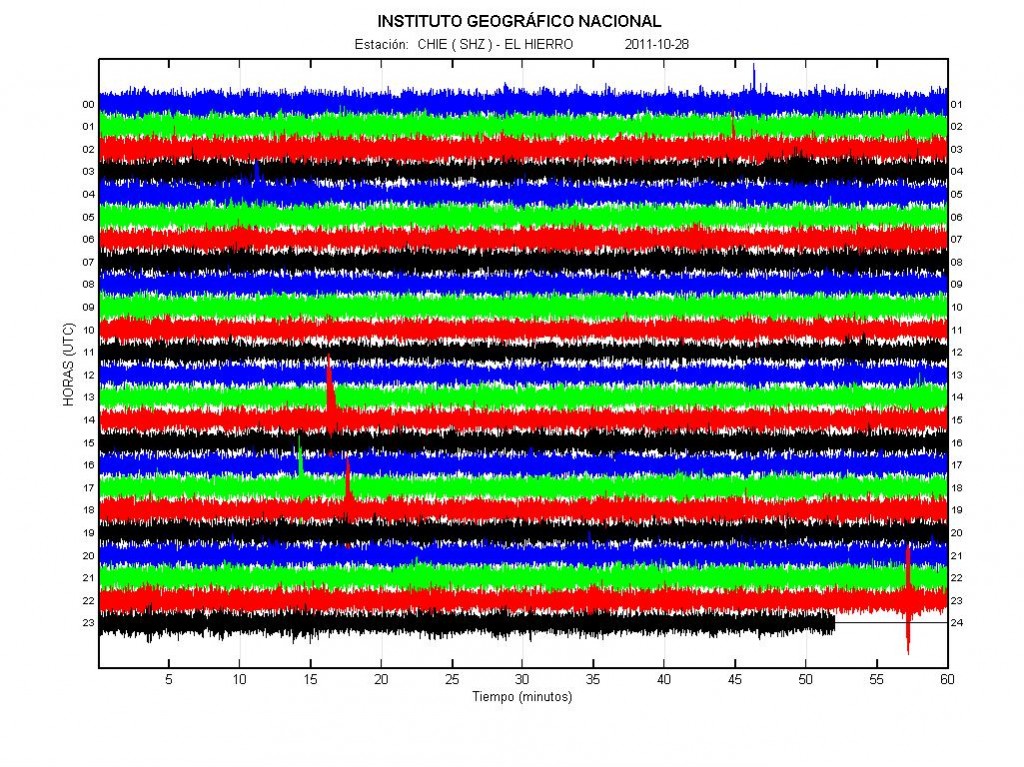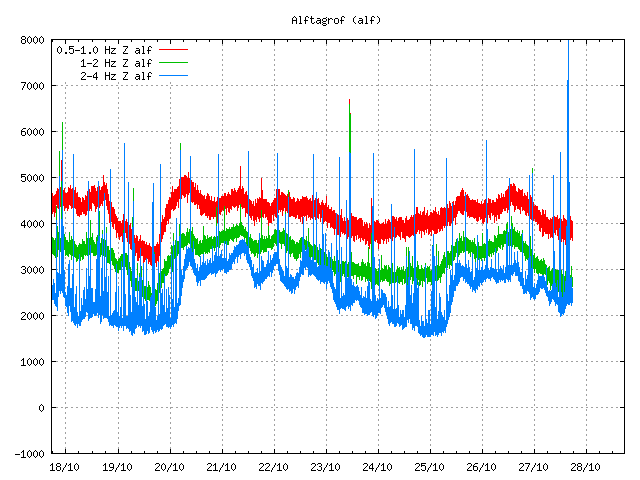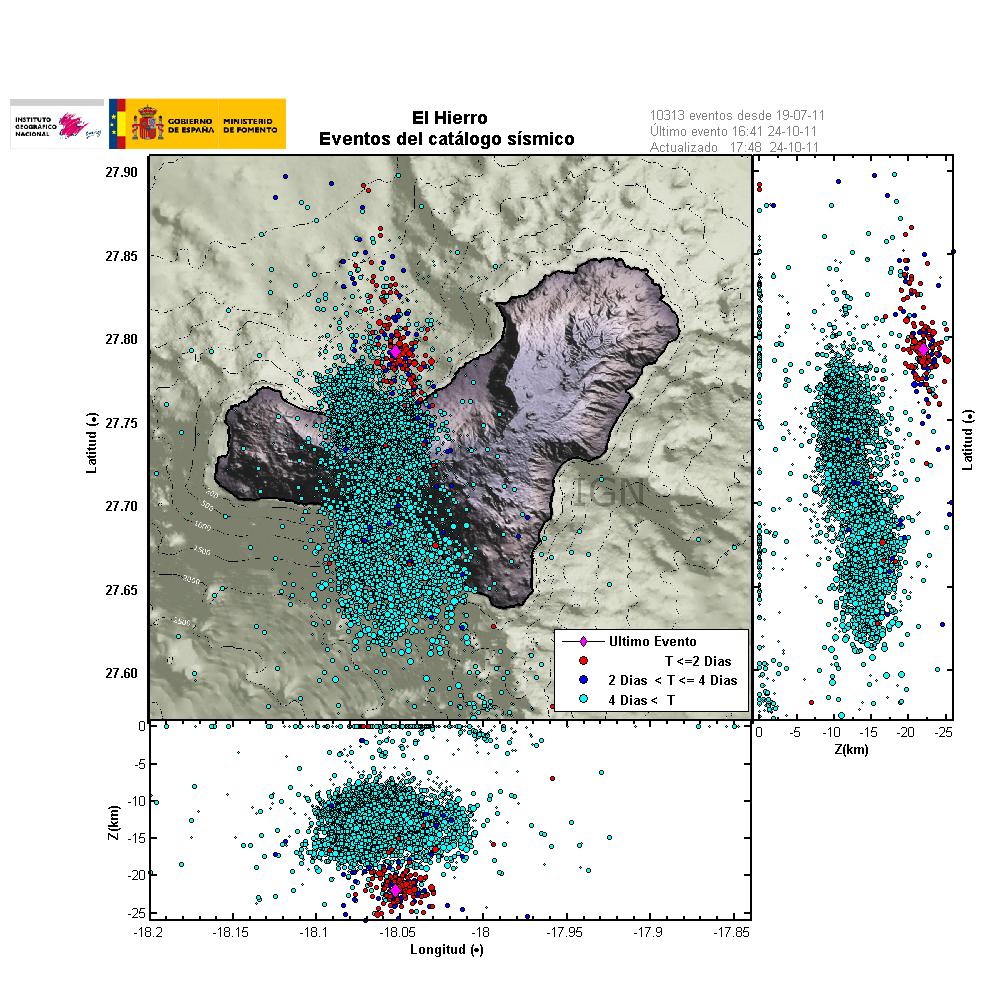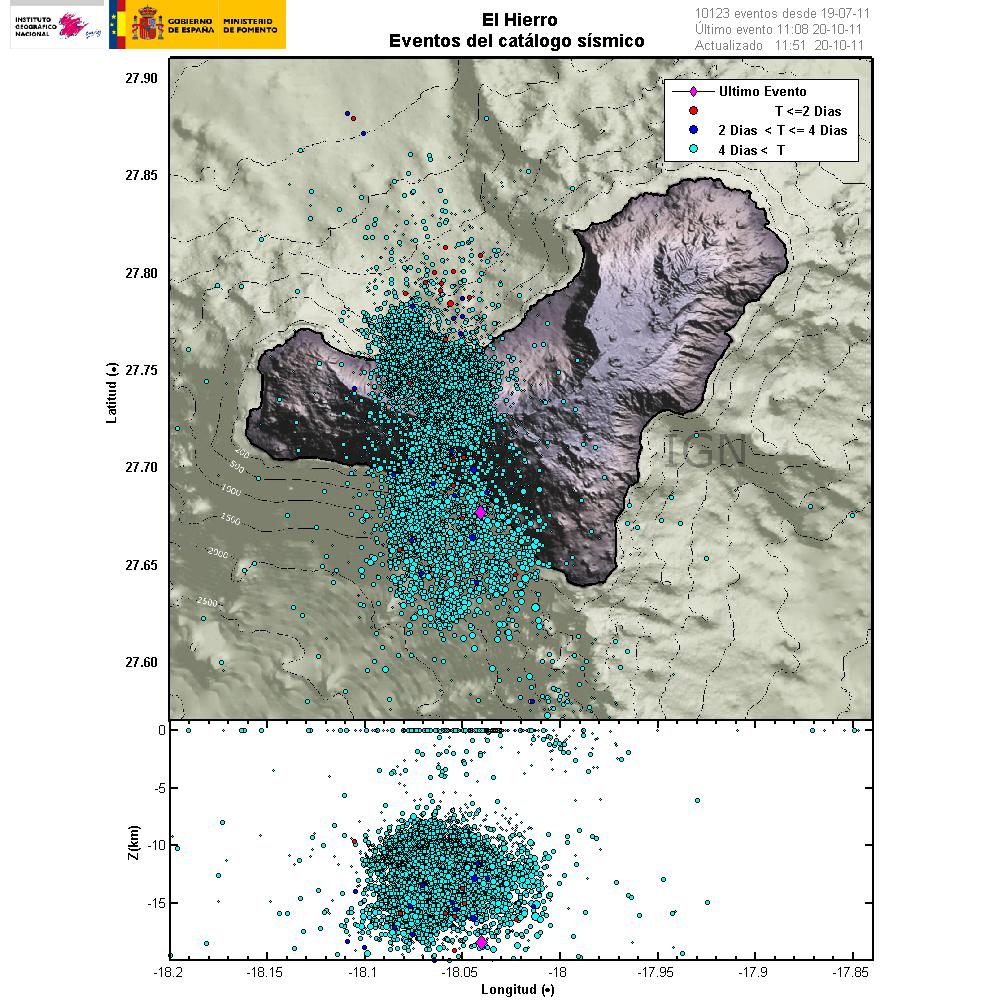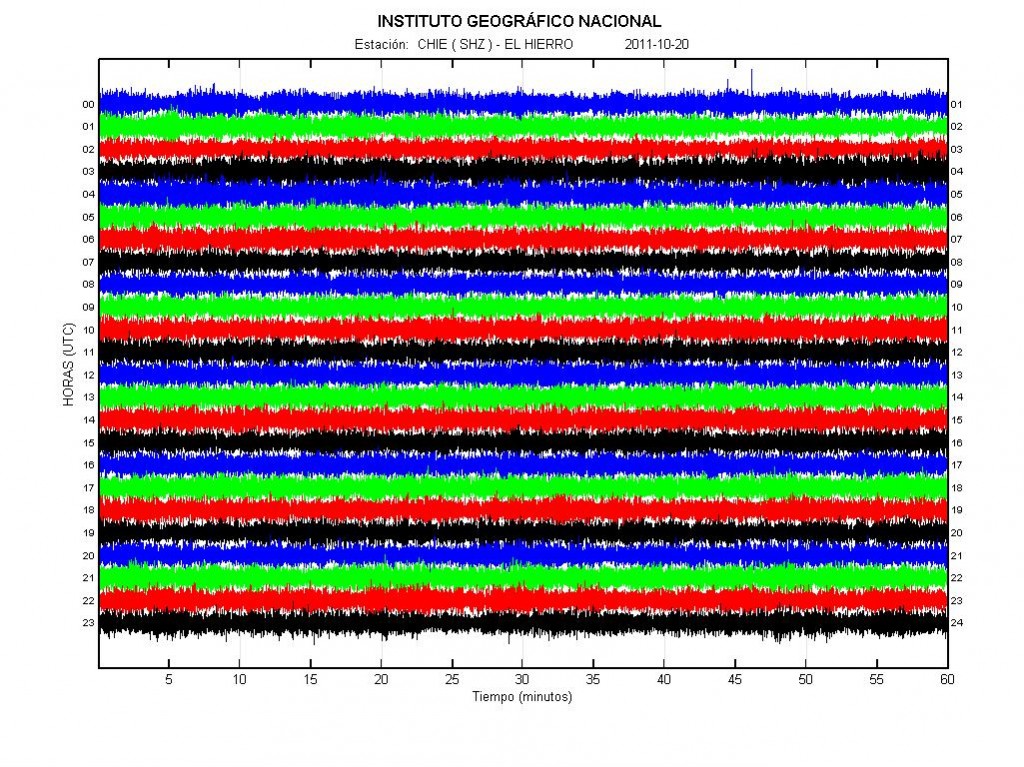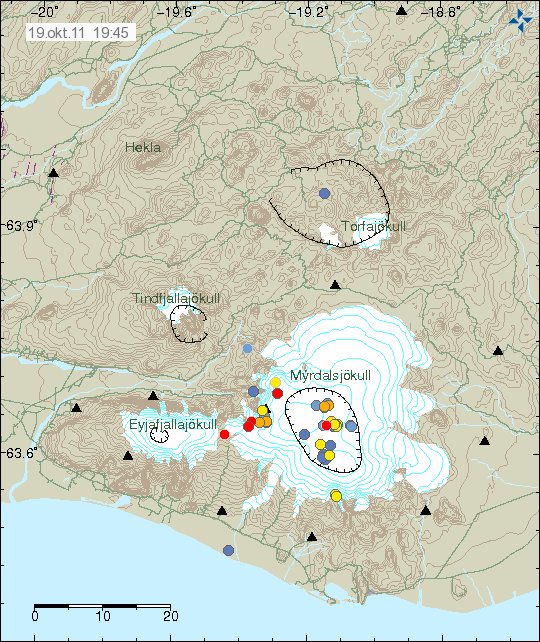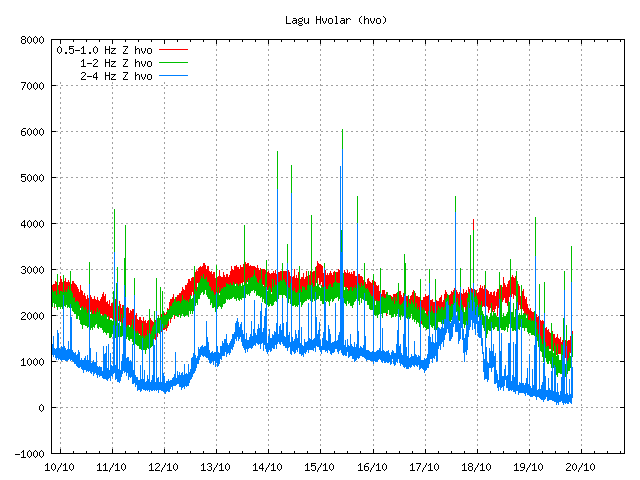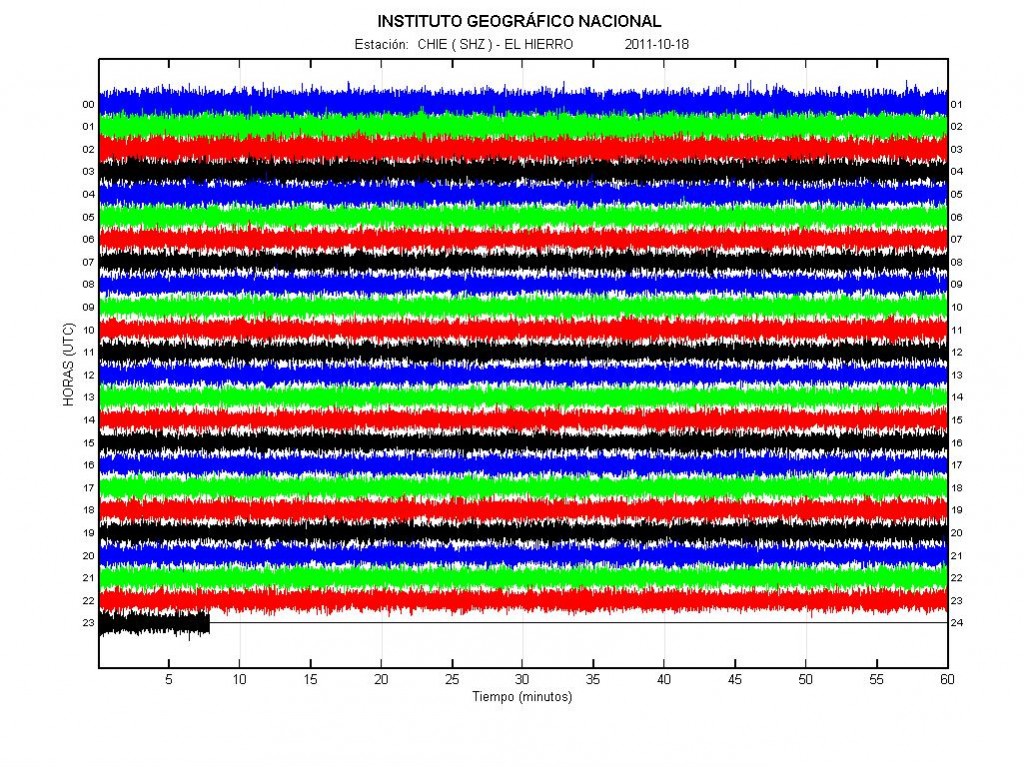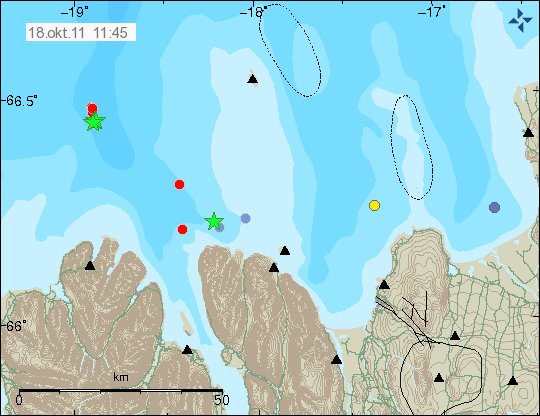The current tremor data now suggests that a new vent or vents have opened or are about to open up just outside north-west coast of El Hierro volcano. The depth where the main earthquakes have been taking place is about 100 to 300 meters (but might be more). So far the largest earthquakes to take place in this area was a ML3.9 with the depth of 22 km. What is important in this is not the fact that the earthquakes are at great depth. But also the fact that a more shallow might not take place. As that was not the case when the eruption started in El Hierro on 10 October, 2011. It is unlikely that there is going to be any shallow earthquake activity before a new eruption vents opens up. As that was not the case on the 10 October, 2011 from what I can remember.
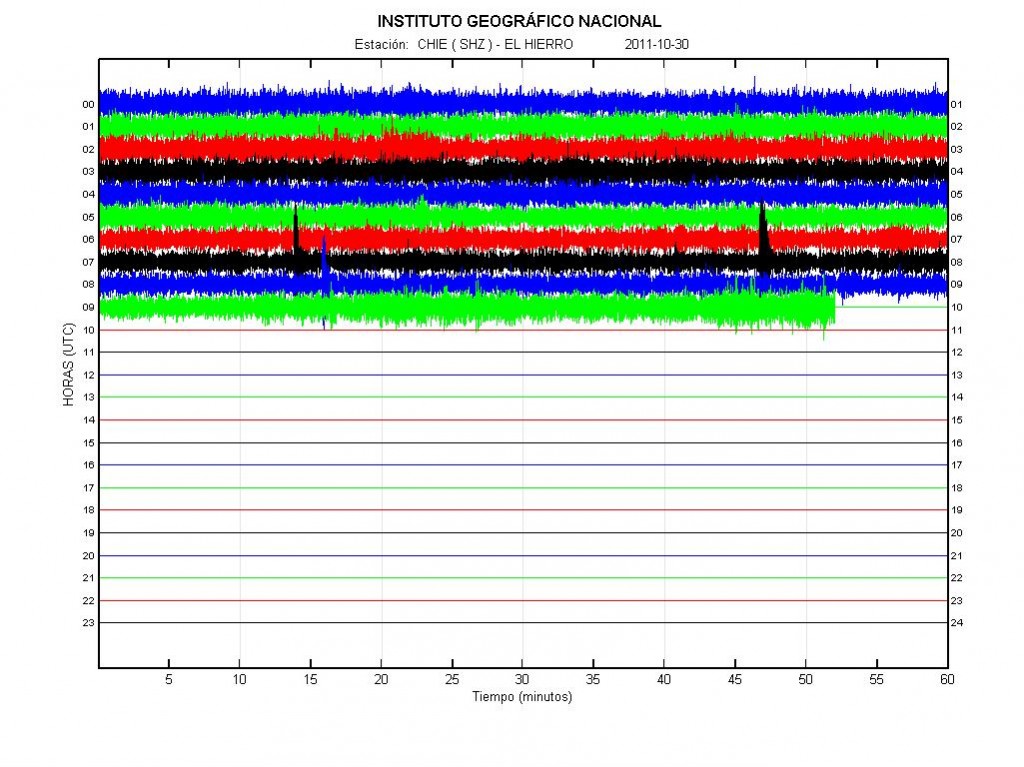
Current harmonic tremor in El Hierro. So far there has not been much change in harmonic tremor as can be seen here. But that can change without warning. Copyright of this picture belongs to Instituto Geográfico Nacional.
I am not sure how strong earthquake this area can make. But I am guessing that it might well be in the upper Mb5.5+ range. The earthquakes that are now taking place are due to magma injection. Not a tectonic one. There is a difference between the two. But this rifting in El Hierro might trigger a earthquake close to El Hierro Island in near future, that earthquake would be a tectonic one. Not a earthquake created by magma movements.
So far the new vents are still unconfirmed. But there are signs in the harmonic tremor data that new eruption vents might be opening up or have already opened up. But at this moment I am waiting for a confirmation on this actually taking place. That is going to take a few hours, given the experience so far.

